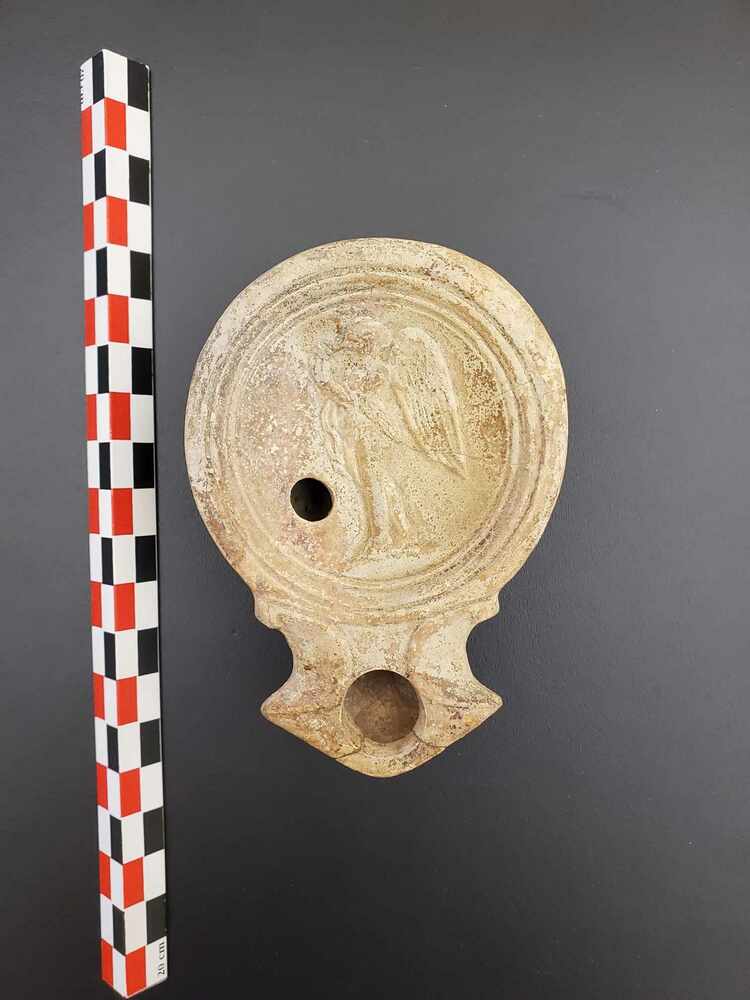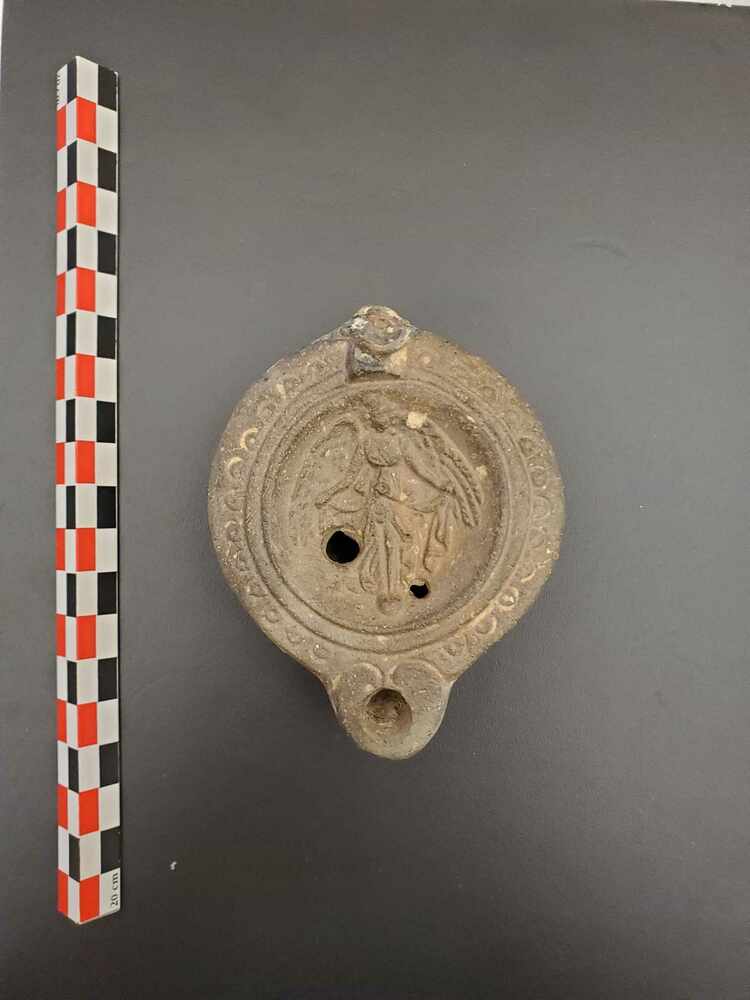Nike: A Lasting Legacy
Origins
This oil lamp depicts the Greek Goddess of Victory: Nike.
When Zeus requested assistance in the war against the Titans, it was Nike and her siblings who came forward first. Born of the giant Pallas and the River Styx, Nike and her siblings (Zealus [zeal], Cratos [strength], and Bia [force]) impressed the king of the gods so, that he invited them to stay on Olympus with him.
Nike represents victory in war, but also in peaceful competition. She is usually portrayed with large wings, and she often holds a laurel wreath or a palm branch to symbolise victory.
FUN FACT: The sports brand Nike is named after the Greek goddess Nike, and the iconic swoop logo is meant to represent the deity’s wings.
Authors: Georgian Parkes and Valentina Donato
Greek to Roman
Nike was a relatively minor goddess in Greek mythology, and is often represented alongside either Zeus or Athena. In fact, Nike and Athena became so closely associated that Athena is sometimes referred to with the epithet Athena Nike (Athena of Victory), and the depictions of these two goddesses can easily be confused. Nike was worshipped in the Athenian Acropolis at the Temple of Athena Nike, built in the 5th century BCE; in this physical dedication to the gods, Nike functions as an attribute of the goddess Athena.
In the Roman pantheon, Nike took on more significance. Now titled “Victoria,” she was widely revered as the personification of victory, and had a temple on the Palatine Hill in Rome. She was particularly worshipped in military contexts, and is commonly featured on coinage.
Authors: Georgian Parkes and Valentina Donato
End of an Era
After the defeat of Antony and Cleopatra at the Battle of Actium in 31 BCE, Octavian erected a statue of the goddess Victoria in the Roman Curia (senate house). As a symbol of the success of Rome, the Altar of Victory was the subject of religious offerings and ceremonies for centuries.
However, as Christianity became more prevalent, the statue came under threat. In 357 CE the emperor Constantius II ordered the removal of the altar. The removal of the statue was met with protests, and the altar was later restored by subsequent emperors, remaining a topic of debate and contention at least into the reign of Theodosius I.
This conflict demonstrates the decline of traditional Roman religion and the rise of early Christianity.
FUN FACT: Although Victoria was no longer worshipped in Roman Christianity, her icon remained an important symbol. The angels of Christian theology may have derived their wings from the figure of winged Victoria.
Authors: Georgian Parkes and Valentina Donato



